One of Steve’s favorite pastimes is sharing videos of his beloved Westie puppy, Artie (who also happens to be our chief of security), chasing after various objects, such as balls, squirrels, mops, and etc. Steve keeps his human colleagues apprised of Artie’s progress with frequent text updates: “The ball is definitely winning this round.” “Artie learned how to jump!” “No computer charger; Artie defeated the wires.”
After hearing about Artie’s inability to resist chasing after some nefarious household item or other, I found myself reflecting on how many of our nonprofit clients frequently come to us feeling pressured into action—either because of funding, a programmatic reason, or another factor. Because of the perceived pressure to act quickly, these clients are unable to build a strategy for their work and plan effectively.
Navigating the Urge to Act Before Planning
Here is how we have worked with our clients to navigate the pressure to act before planning:
Internal: Organizations are opportunistic in a positive way—pursuing grants, partnerships, and other opportunities as they arise.
One nonprofit client came to us after a few years of consistent and exciting growth in its programs. While pleased with their recent growth, they realized the organization’s trajectory of taking on partnerships and programs was unsustainable for their current capacity. Additionally, the organization’s myriad of partnerships and programs was causing internal and external confusion about their identity.
We worked with this client on a strategic planning process that allowed them to take stock of what was working well for the organization, gain stakeholder input, and map out where they wanted to be over the next three years. We also ensured that their plan would not preclude them from nimbly responding to opportunities, which they viewed as a key aspect of their organizational identity. The resulting strategic plan serves as a framework for how our client will solidify their internal capacities to grow in the direction where they can have the greatest impact.
External: A major funder pressures organizations to scale—and quickly.
Partway through a financial sustainability engagement for another organization, our client learned that their core funder was requiring that the program scale from three locations to nationwide over the following year, or else the funder would no longer be able to support it. Our client did not have the necessary infrastructure and internal capacities to scale the program. Furthermore, they did not want to endanger the program by sacrificing quality for quantity.
We worked with our client to build a case for extended funding and time to develop the program’s model for scale, to which the funder was receptive. We were then able to work with our client on a plan for scaling their program, including developing a financial tool that would allow them to model out the financial implications for different types of growth. In this way, our client was able to meet their funder’s expectations while also developing a thoughtful plan for action.
We have learned a great deal from helping our clients to be strategic, as opposed to jumping immediately to action. We’ve found that while it often feels risky not to act, it’s even riskier for organizations (and Artie) to act before planning.


Hi Steve, I’d never read this before or seen Artie in action! But what great info. I have a question about our business, Seagull Bakery… to be for-profit or not. I’ve never gotten a good answer so we’re just for-profit because it’s “me” and I don’t have any motivation to write grants, ask folks for money, or build a board. So that’s kinda it, right? I can certainly speak to Kath when I see her next month, so excuse me if this response isn’t appropriate for this forum. I will say though, that if anyone ever wanted to make our bakery a non-profit, I know who where to go for guidance!
All the best, Carol Lombardo
Hi Carol: Thanks for reading. As to your question, it really comes down to what you think is your likely current and future business model. There are mission-driven enterprises that choose to operate as for-profits (including Impact Catalysts, which is set up as a benefit corporation) because their revenue is earned rather than donated, or because they want to be able to access equity markets for capital. Organizations that hope to blend philanthropy and earned revenue need to organize as nonprofits. There are pros and cons to both scenarios, of course. So I’ll leave you with the ultimate consulting cop-out: it depends.